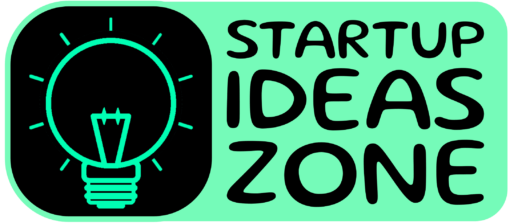Understanding Revenue Optimization Software
In the ever-evolving landscape of modern business, staying ahead of the curve involves adapting to rapid technological changes and leveraging data-driven solutions. Among these innovative solutions, Revenue Optimization Software has emerged as a powerful tool, enabling companies to analyze pricing strategies and suggest methods to optimize revenue generation efficiently. For startups navigating the complex milieu of entrepreneurship, this software offers distinctive advantages, from understanding consumer preferences to tailoring pricing models that maximize profits.
Revenue Optimization Software serves as an analytical powerhouse, processing vast amounts of data to uncover trends and predict future market behaviors. It presents an immediate insight into how changes in pricing strategy can affect revenue and helps businesses align their pricing goals with market expectations. As businesses become more data-driven, the reliance on such cutting-edge tools grows, making it an indispensable ally for startups looking to thrive in competitive markets.
Innovation Potential and Market Disruption
The disruptive potential of Revenue Optimization Software in the startup ecosystem cannot be overstated. In an age where data is considered the new oil, the ability to harness this data effectively drives innovation. Startups must embrace the agility that this technology offers, moving away from traditional cost-based pricing to more dynamic and contextually aware strategies.
Many startups have already capitalized on this potential. Take, for instance, the case of Uber. By employing sophisticated algorithms similar to those used in revenue optimization software, Uber introduced surge pricing—a dynamic pricing model—that adapts to real-time supply and demand conditions. This strategy not only maximized revenue but also optimized resource allocation, creating a new standard in the ride-sharing industry.
Moreover, Revenue Optimization Software aids in identifying unaddressed opportunities within the market, allowing startups to disrupt established industries. For example, Airbnb utilized advanced pricing analytics to personalize pricing for hosts, thereby disrupting the traditional hospitality sector and transforming it through peer-to-peer network models.
Navigating Key Challenges
While the benefits of Revenue Optimization Software are clear, startups may face several challenges in implementation. Firstly, the integration of such sophisticated software requires a significant investment in infrastructure and training. Therefore, startups must ensure they possess the necessary technological foundation and human capital skilled in data analytics.
Intellectual property and data privacy concerns also pose significant hurdles. Startups must navigate these legal landscapes and establish robust mechanisms to protect sensitive customer data and proprietary algorithms. Furthermore, scalability remains a critical concern. Startups must ensure their software solutions can handle increasing data loads and adapt to evolving market conditions without compromising performance or reliability.
A research paper by Harvard Business Review highlights the difficulty of adopting new pricing strategies due to ingrained cultural and organizational practices. Startups need to foster a culture of flexibility and innovation, preparing teams to embrace change and implement insights provided by revenue optimization tools.
Seizing Unique Opportunities
Despite these challenges, the unique opportunities presented by Revenue Optimization Software are vast and varied. Startups can leverage these tools to achieve product-market fit by analyzing consumer behavior and preferences, thus tailoring their offerings to meet precise demands.
By integrating machine learning and AI, startups can predict market trends and consumer reactions with unprecedented accuracy. This foresight allows businesses to pivot strategies in real-time and ensure they remain aligned with consumer expectations. Moreover, such advanced analytics can aid in efficient resource allocation, enabling startups to deploy their limited resources more strategically.
The integration of Revenue Optimization Software facilitates a deeper understanding of customer lifetime value (CLV), enabling startups to craft engagement strategies that encourage repeat business and foster long-term customer relationships. By recognizing the key drivers of customer satisfaction, companies can enhance their customer service, promote brand loyalty, and ultimately boost revenue.
Critical Strategies for Success
For startups seeking to leverage Revenue Optimization Software, several strategies can ensure success. Firstly, effective fundraising is crucial. Generating sufficient capital allows startups to invest in necessary technologies and develop competitive pricing models. Engaging with investors who understand the importance of data-driven decision-making can accelerate the journey from ideation to implementation.
Achieving product-market fit is another vital step. Startups must not only develop a unique value proposition but also ensure their revenue optimization strategies complement it. This involves continuous testing, feedback collection, and iterative improvements based on software-generated insights.
Scaling presents yet another challenge but also a substantial opportunity. Innovative startups have successfully used Revenue Optimization Software to scale their operations by automating repetitive tasks and optimizing resource allocation. For instance, subscription-based businesses like Netflix have harnessed revenue optimization tools to refine their pricing strategies, enhance customer experience, and effectively scale their offerings globally.
Customer acquisition remains at the heart of startup growth. Revenue Optimization Software can provide insights into cost-effective acquisition channels and ideal pricing tiers to attract different consumer segments. By understanding which aspects of their pricing appeal to prospective customers, startups can design targeted marketing campaigns that resonate with diverse audiences.
A Closer Look at Business Models and Technology
Revenue Optimization Software also influences the development of unique business models, primarily through innovative pricing strategies. Startups can explore subscription-based, usage-based, or freemium models, each offering discretely tailored value to distinct customer segments.
Subscription models, for instance, benefit significantly from revenue optimization insights. By analyzing customer usage patterns and preferences, startups can develop tiered pricing strategies that align with customer needs while maximizing retention and revenue. SaaS companies like Dropbox and Spotify have utilized these insights to offer personalized experiences, demonstrating the efficacy of Revenue Optimization Software in enhancing customer satisfaction and fostering brand loyalty.
Similarly, the usage-based pricing model can be optimized using predictive analytics to set competitive rates that enhance customer experience. Startups can deploy algorithms to forecast usage trends and adjust pricing in real-time, boosting profitability and offering customers a transparent pricing structure.
Real-World Case Studies
SpaceX, under the leadership of Elon Musk, offers a compelling case study of how Revenue Optimization Software can be utilized to revolutionize an industry. By analyzing complex data from missions, SpaceX optimizes launch schedules and pricing, dramatically reducing costs and making space exploration more accessible. This ability to fine-tune operations based on data-driven insights has contributed to SpaceX’s reputation as a leader in aerospace technology.
A different industry example is Netflix, whose recommendation engine is fine-tuned using revenue optimization principles. By understanding viewer preferences and regional content popularity, Netflix optimizes content acquisition and pricing strategies, ensuring a profitable alignment between content offerings and subscriber interests.
Academic Insights and Industry Reports
An MIT Sloan Management Review article underscores the growing importance of data literacy in effectively using Revenue Optimization Software. As more companies recognize the value of data-driven insights, the demand for tech-savvy professionals who can translate complex data into actionable strategies continues to rise.
Furthermore, an industry report from Gartner highlights the critical role of AI and machine learning in transforming pricing strategies. The adoption of these technologies is set to increase, with companies expecting significant improvements in predictive accuracy, decision-making speed, and overall revenue generation.
For startups, staying informed of these academic and industry insights is crucial. Understanding the key trends, technological advancements, and competitive landscapes allows startups to position themselves strategically and harness the full potential of Revenue Optimization Software.
Conclusion
The transformative potential of Revenue Optimization Software for startups is both immense and undeniable. While challenges remain, the opportunities for growth, disruption, and innovation are unparalleled. By effectively integrating this technology into their operations, startups can craft dynamic pricing strategies, achieve product-market fit, scale efficiently, and foster lasting customer relationships.
As we venture further into the digital age, the convergence of machine learning, AI, and analytics in Revenue Optimization Software marks a new era for the startup ecosystem. Entrepreneurs, investors, and tech enthusiasts alike must recognize and embrace the profound impact of these technologies not only to survive but thrive in today’s competitive business landscape.
For aspiring startup founders and seasoned entrepreneurs seeking to maximize their ventures’ potential, Revenue Optimization Software remains an essential tool, offering both a compass and map in their journey towards success.

